Coexistence with volcano
Izu Oshima is a volcanic island that was created by a submarine eruption of thousands of years ago and has grown through many eruptions.
In the early days of the island, the surface was covered with a black plume of volcanic ash and lava. Eventually, life arrived on the island, carried by the wind and currents, or flown in by birds and insects. Gradually, more and more plants and animals began to inhabit the area.
In time, people arrived and settled on the island.
However, eruptions have occurred repeatedly, and each time creatures and people have been harmed. But the descendants of those who survived are still here today. Creatures and people have adapted to their environment and have lived with volcano.
The history of volcanic islands

1The history of IzuOshima begins with the story of old volcanoes lined with the sea.
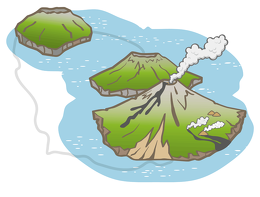
A few hundred thousand years ago...
There were three volcanoes in this region.
2The three volcanoes ended their activities
and were cut by waves and gradually shrunk.
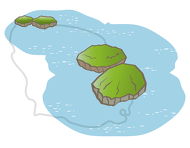
If this continues, the three volcanic islands will disappear into the sea...
That's when!
3Tens of thousands of years ago,
a new eruption began on the ocean floor nearby!
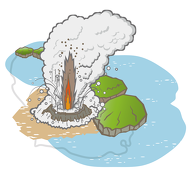
This is the birth of the volcano that created Izu Oshima!
4The new volcano erupted several times,
covering the remains of the original three islands.
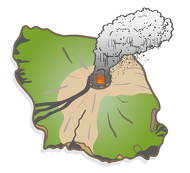
Eruption continued even after that,
and it became one big volcano island.
5About 1700 years ago, a massive steam eruption occurred at the summit.
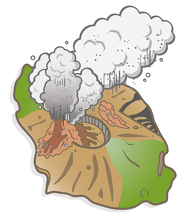
Large amounts of rocks and sediment flowed down to cover the island. At the same time, the top of the mountain caved in, creating a caldera.
6During the great eruption that began in 1777,
a new mountain was formed in the caldera.
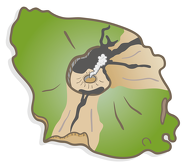
That is Mt. Mihara.
Since then, the volcano has erupted many times,
sending lava flows into the caldera.
The 1986 eruption outside the caldera was the first eruption in about 560 years.
Regeneration of plants
Izu Oshima is a volcanic island that was created by a submarine eruption tens of thousands of years ago and has grown through many eruptions.
Life on a volcanic island
Our ancestors lived through many hardships, enduring frequent eruptions.
The beginning of human life
“Remains of Shimotakabora” is the oldest Jomon period site on Izu Oshima.
“Remains of Tatsunokuchi” is the remain of the Middle Jomon period, buried in a lava flow.
Water and life
The surface of Izu Oshima is well drained and there are no rivers or lakes. We have a history of difficulties in securing water. Every day the women went to fetch water from the few springs and from the wells. We carried the water troughs on our heads.
Water and industry
In Izu Oshima, the lack of water made it impossible to build rice paddies.
On the other hand, the saving of water and salt has also led to the creation of a fermented food, the kusaya. In this way, a unique way of life and industry was nurtured on a volcanic island where water was scarce.
Life with camellias
Camellia japonica thrives in a warm, rainy climate and well-drained soil, and it is also resistant to volcanic gases. It is said that an estimated 3 million Camellia japonica trees grow wild on Izu Oshima.
Fossils of camellia leaves have been found in the strata of Jomon period archaeological sites, showing that the camellia has been close to our lives since ancient times.
The camellia, with its strong roots, hard trunk and year-round foliage, has been planted as a windbreak to protect houses and fields from the island's strong winds. The camellia trunks and branches are used to make charcoal and the seeds are processed into camellia oil and souvenir accessories, all of which have become an integral part of the islanders' lives.
Making the most of volcanic landforms
The Habu port has an exceptional origin: a crater lake created by a magmatic eruption in the beginning of the 9th century was connected to the sea by a tsunami caused by the Genroku earthquake in 1703, and the mouth of the bay was artificially widened and opened. Surrounded by a natural windbreak, the port flourished and laid the foundations for the development of the island.
The flat crater created by the fissure eruption has been used as a baseball field, a field and a cemetery, the lava cape jutting out into the sea as a pier and the sea cliff cove as a fishing port.
Volcano tourism
The volcano attracted many people. Many tourists came to see the volcano.
The trail leading from Motomachi Port to the summit was lined with teahouses and was crowded with climbers. The new attractions introduced in the early Showa period, such as camel and donkey rides and slider rides through the desert landscape, also attracted much attention.
The 1986 eruption caused traffic jams as islanders and tourists alike came to the summit to see the lava fountains and lava flows.
Coexistence with volcano
The eruptions have affected the people many times.
The volcanic ash fell so thickly that fields were buried and crops withered, and famine sometimes occurred.
In the 1986 eruption, a fissure eruption occurred on the northwestern slope of the outer rim. Lava flows flowed down into the Motomachi area and approached 200m from the residential area. This led all the islanders to escape for one month outside the island.
While the volcano can cause disasters that threaten the calm, normal life of the island. However, except during an erupting moment, gives the benefits that is indispensable to the living of the island. Long, long ago exploding magma would create a red sky that the islanders called “Gojinka” which the people revered.
We live not at the foot of a volcano, but in the middle of a volcano.
The theme of the Izu Oshima Geopark is how to live in harmony with the volcano, which will continue to erupt in the future, and how to protect and make the most of the island's limited resources and unique culture and ecosystem.


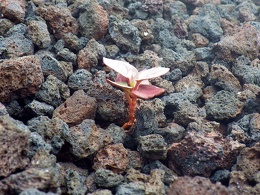
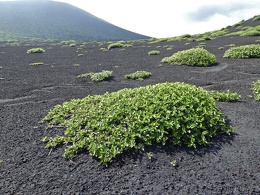
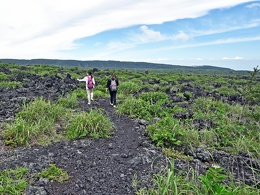

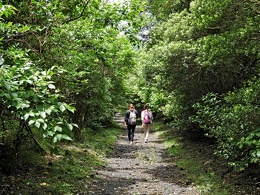
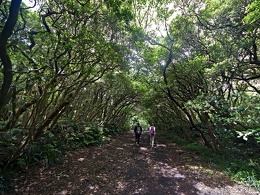
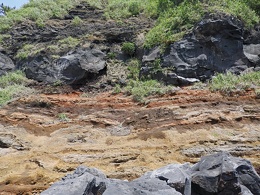
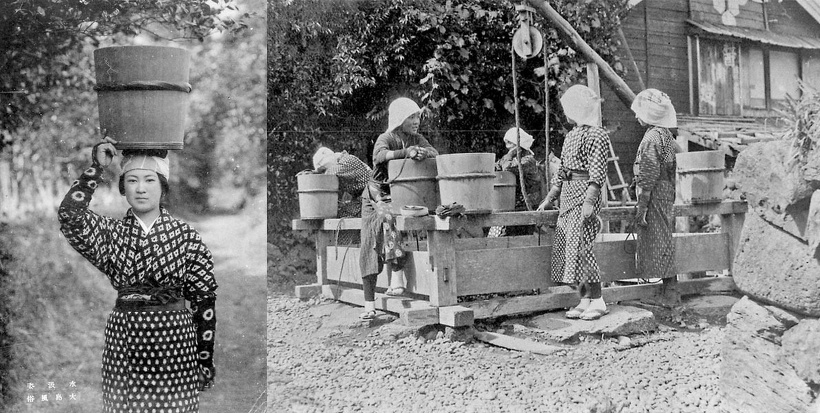
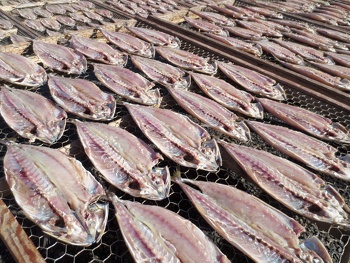
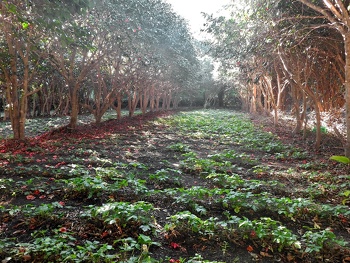
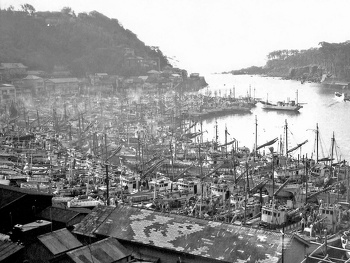

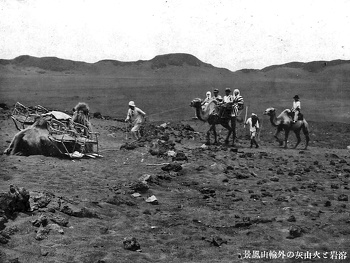
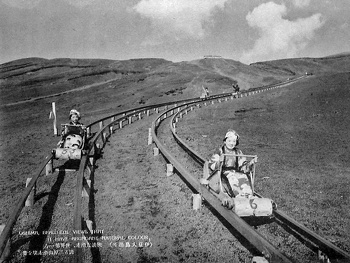
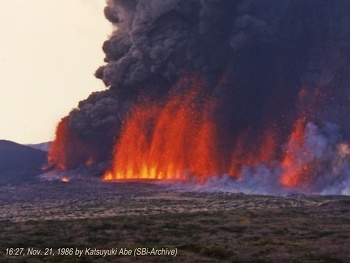
How did the Izu Oshima volcano form?